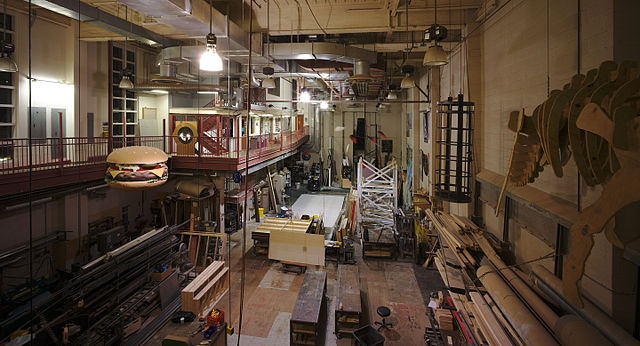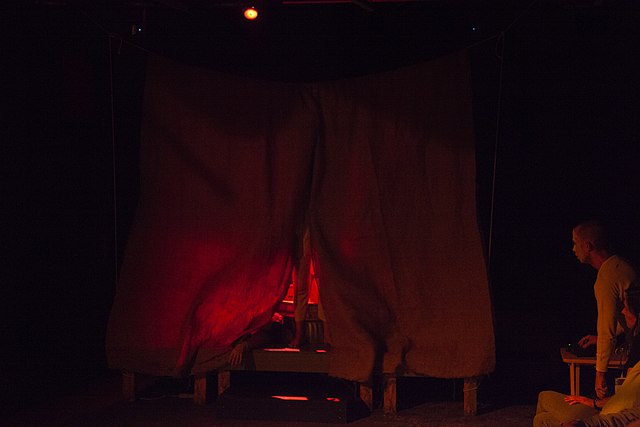Set construction is the process undertaken by a construction manager to build full-scale scenery, as specified by a production designer or art director working in collaboration with the director of a production to create a set for a theatrical, film, or television production. The set designer produces a scale model, scale drawings, paint elevations, and research about props, textures, and so on. Scale drawings typically include a groundplan, elevation, and section of the complete set, as well as more detailed drawings of individual scenic elements which, in theatrical productions, may be static, flown, or built onto scenery wagons. Models and paint elevations are frequently hand-produced, though in recent years, many Production Designers and most commercial theatres have begun producing scale drawings with the aid of computer drafting programs such as AutoCAD or Vectorworks.
Carpenters work on constructing the set
A set under construction at the Semperoper in Dresden, Germany.
Set construction at the Carnegie Mellon School of Drama.
Scenic design, also known as stage design or set design, is the creation of scenery for theatrical productions including plays and musicals. The term can also be applied to film and television productions, where it may be referred to as production design. Scenic designers create sets and scenery to support the overall artistic goals of the production. Scenic design is an aspect of scenography, which includes theatrical set design as well as light and sound.
Set design model by Marcel Jambon for an 1895 Paris production of Giuseppe Verdi's Otello.
Set design for the New Zealand Opera's 2016 production of Mozart's Magic Flute
Scenic design for The 2010 Family Series, by Glenn Davis
A simple red curtain set design for the Oresteia presented by Stairwell Theater, 2019







